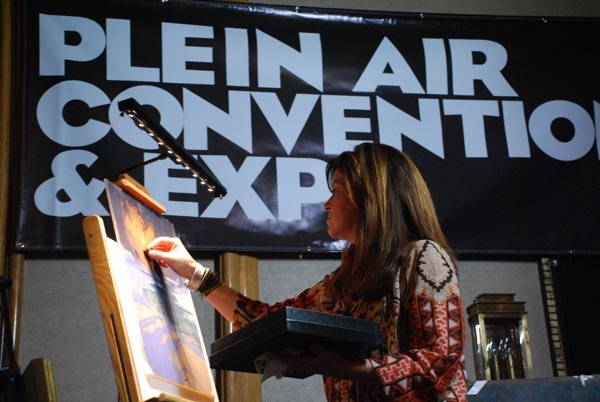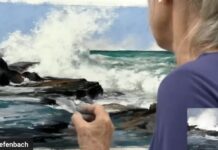
It’s a question often asked by artists. What are the important points to consider when photographing one’s artwork?
There are two relatively easy things to remember: quality of camera, and making sure that the plane of the camera lenses is utterly parallel with the plane of the painted surface. And even with those two items, there is some flexibility. A reasonably good digital camera will produce a reasonably good photo, and if the planes of the lens and the canvas are not perfectly parallel, it can be adjusted (with some degradation of the image) in Photoshop.
But the last item to consider is the most important: lighting. This subject is complex because it is subjective, to some extent. Questions the artist must ask start with the decision on what the photograph is supposed to accomplish. Most professionals believe that the photograph should give the most accurate representation of the artwork possible, but even that is complex and subjective. Should one present how the artwork would look in north light? In gallery conditions? In the studio? In a collector’s home? All of these scenarios may imply a different color temperature to the light. What is the ideal light? Is it the way a painting would look in a studio with just one light source — north light from skylights and/or high windows?

Michael Obermeyer with an easel light, painting a nocturne
The fact is that in most environments, there is more than one light source. There may be artificial light, possibly of two varieties, and there may be natural light contaminating the conditions further. For years, for photographing art, many experts recommended two tungsten lights, one on either side of the painting, bounced indirectly onto the painting with reflectors. The key index that artists talked about was color temperature measured in Kelvin units. Tungsten light was about 3,200 Kelvin. Compare that to daylight, which is 5,500 Kelvin, and thus much cooler. Most incandescent bulbs were warmer than tungsten lights.
As lighting technology become more sophisticated, another index was increasingly used — Color Rendering Index (CRI). This metric measured how accurately color was rendered by the light. A CRI of 90 or above was considered acceptable.
Now a third metric is often considered. It’s called R9, and it goes beyond how CRI is measured. It deals with how the color red is rendered, and no one needs to tell an artist how important this color is to most paintings — especially portraits.
Of course, once a painting leaves the artist’s studio, all bets are off. It may hang in a collector’s home with fluorescents illuminating it. All an artist can do is honestly present the artwork with the best photography taken in the best light possible.

This shot of Clive Tyler using a Revelite helps show how the LED lights are arrayed in the device.
At the recent Plein Air Convention & Expo (PACE), in Monterey, California, several artists painting demos on stages requested easel lights from an exhibitor named Revelite. The demonstrating artists were raving about the lights during their presentations, so a closer look seemed warranted. Bret Englander is the co-founder and current sales and marketing director for Revelite. He shies away from giving any direct advice on photographing artwork, but he understandably stands behind his product. “It is 3,000 Kelvin, but more importantly, it has a CRI of 95 and an R9 value that is between 90 and 92,” he says. “When we designed it, we engineered it for collectors, but artists tipped us off that it was a really good tool for them to paint with. This has become a major part of Revelite sales.”
Revelite’s easel lights have a dimmer switch that allows the artist to choose the level of illumination, with three rows of LED lights that are also adjustable. Thumbscrews allow the user to adjust the rows to hit the canvas from various angles, so no matter how tall or short the canvas may be, even illumination is possible through adjustment. The dimmer switch also allows the light to work well outside for nocturnes, and a battery pack makes the apparatus portable.
Englander says his company’s easel light would be ideal for photographing artwork, but he warns that while they work great for nocturnes, they are not weatherproof. “Treat them as you would your cellphone,” he says.




